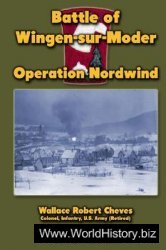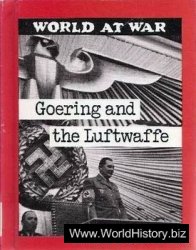The international movement of capital has played a critical role in the economic development of the United States. Prior to the early 1890s, American investors’ sustained capital investment abroad was minuscule. Between 1890 and 1914, however, the United States became a major exporter of foreign capital, particularly to Canada, Latin America, and Europe. Well into the 1930s, U. S. investments in countries of the Western Hemisphere accounted for an estimated 65 percent of all American investments abroad.
Prior to the 1890s, Great Britain long had been the chief source of foreign capital investments, even in the Western Hemisphere. As the manufacturing base of the United States matured in the 1890s, American investors had additional capital available for export. Great Britain’s dominant form of capital investment had been loans to governments and to railway companies. In contrast, the dominant way that the United States exported capital was in the form of direct investments abroad.
Although the United States did loan capital to foreign governments, especially during World War I, the creation of branch plants that manufactured goods for foreign markets characterized most of its economic expansion abroad. While the United States and Great Britain competed with one another at the turn of the century, the onset of the war in Europe brought a dramatic shift to the international capital market. Because Great Britain had to expend much of its surplus capital on the war effort the United States had new opportunities to further expand its industrial production and thus had additional surplus capital for investment abroad.
Prior to the onset of war in 1914, the United States imported more goods from Europe than it had exported to the European continent. The destructive war severely crippled the European economy, both in terms of its factories and cities and the availability of labor. The United States benefited both by exporting more goods to Europe and by changing the balance of trade and investment. After the war, European citizens owed private Americans $3 billion, and their governments owed another $10 billion. Wartime loans from the United States to Europe constituted the primary source of this capital imbalance. The increasing level of American capital invested abroad reflected the changing position of the United States in the international economy between 1900 and 1914. Between 1897 and 1914, American direct investments abroad more than quadrupled, increasing from an estimated $634 million to $2.6 billion. Although investments abroad took many different forms, investing directly in manufacturing operations in Europe and Canada tended to be the major form. By contrast, American investments in Latin America tended to be in transportation and raw materials.
During the early part of the 20th century, promoters of American economic expansion abroad contended that this activity promoted development and not economic dependence. President Theodore Roosevelt’s secretary of state, Elihu Root, argued, “Our surplus energy is beginning to look beyond our own borders, throughout the world, to find opportunity for the profitable use of our surplus capital.” Along with investors, the federal government played an active role in promoting the export of American capital. In particular, such agencies as the U. S. Consular Service, an office of the State Department, provided manufacturers and merchants with regular information about investment and market opportunities in locations across the globe. The monthly reports submitted by the Consular Service were published in the State Department’s Monthly Consular and Trade Reports. They were further disseminated as numerous newspapers and trade journals reprinted various parts in their own publications. To further assist manufacturers with their plans for economic expansion, the Departments of State and Commerce often requested specific information from various consulates. For example, they would ask that consulates provide information on the condition of a particular industry or presence of a commodity in various markets around the world.
While foreign capital investments found much support in the United States, they had a profound effect on the development of the nations that received much of this capital. In particular, American manufacturers owned some 60 percent of Canada’s industries by 1919. This meant that the Canadian standard of living was indirectly set by the United States. American-owned companies determined wages, output, and investment strategies for a significant segment of the Canadian economy.
The investment in manufacturing enterprises abroad was made in various ways, ranging from the transfer of patent rights to the investment of actual dollars in the company. In 1904, Gordon MacGregor founded the Ford Motor Company of Canada, not with a direct capital investment from Ford in the United States, but rather by granting the latter 51 percent equity in the new company in exchange for all Ford rights and processes in Canada, New Zealand, Australia, India, South Africa, and British Malaya. Often the impetus to set up manufacturing in another country was motivated by high tariffs in that country. In Canada, a high tariff had prevented many American companies from exporting to the Dominion, so investing in branch plants that manufactured for the Canadian market provided a means to bypass the high tariff wall constructed by the Canadian government.
Because the United States had emerged from World War I as the dominant nation, its economic expansion would have far-reaching ramifications. The international economy had increasingly become integrated, and the United States relied heavily on foreign trade and foreign investments. In particular, given that European nations owed substantial amounts to the United States, there was a vested interest in the open movement of capital and goods through the international economy. The collapse of the stock market in 1929 would, accordingly, have profound effects not only on the American economy but also on the world.
Further reading: Lance E. Davis and Robert J. Cull, International Capital Markets and American Economic Growth, 1820-1914 (Cambridge: Cambridge University Press, 1994); Cleona Lewis, America's Stake in International Investments (Washington, D. C.: Brookings Institute, 1948).
—David R. Smith
James, William See Volume VI.




 World History
World History









